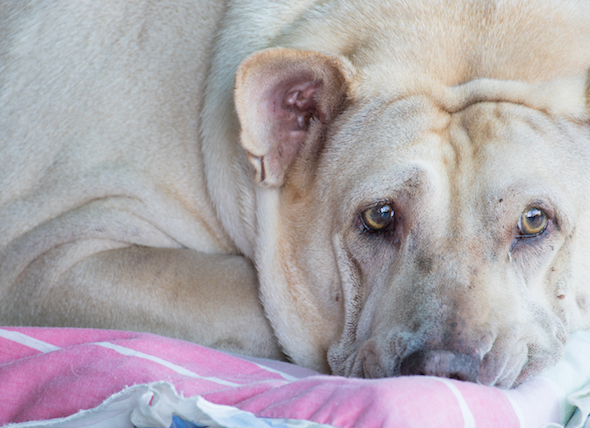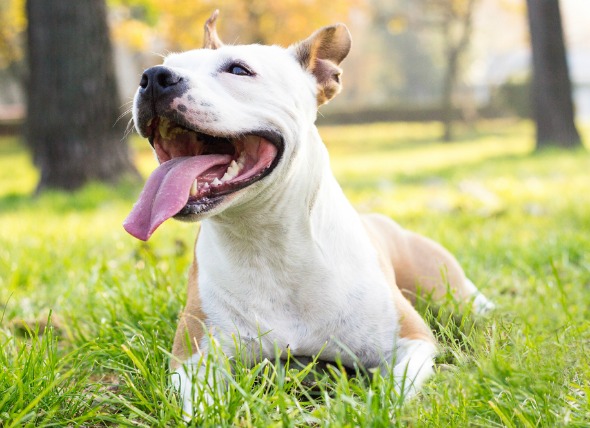

Hookworms can be fatal, especially in puppies. As such, pet owners need to be vigilant for signs of hookworms in their dogs. These blood-sucking parasites can invade, inhabit, and live in the dog's small intestines. In their fourth-stage larvae, the hookworms can cause anemia and inflammation in the dog's small intestine. Active worms leave bite sites and those sites continue to seep blood.
The condition or disease described in this medical article can affect both dogs and cats. If you would like to learn more about how this disease affects cats, please visit this page in the PetMD health library.
A dog with the parasite looks unhealthy and has a poor appetite; the linings of its nostrils, lips, and ears will be pale. If hookworm larvae get into the lungs, the dog will cough, as well as present several other symptoms, including dark and tarry stool, diarrhea, and constipation. Death can come suddenly if the dog is not immediately treated.
Puppies usually acquire this condition through milk from their mothers. These infestations are always caused by ingestion or by larval penetration of the skin, generally found in contaminated water or in a contaminated environment.
Hookworms cannot be seen with the naked eye and must be therefore be microscopically examined by your veterinarian through a stool specimen. This examination will also help the veterinarian determine what course of treatment to prescribe. If some of the puppies in a litter have died, hookworms should be suspected.
To get rid of the worms, a medication that will kill them or expel them will be prescribed. Sometimes that is all that is required. However, nutritional and iron supplementation may be necessary also. Puppies should be put on the worm medication at two weeks of age and continue until weaned and treated monthly after weaning to be sure that all larvae are eliminated.
With pregnant females, treatment should begin two weeks after breeding and continue for two to four weeks after the puppies are born to get rid of possible worms in the intestine, and to protect the puppies.
In severe cases, the dog (or puppy) will need to be hospitalized for fluid therapy, blood transfusion, and supplemental oxygen, depending on the severity of the anemia and the condition of the animal. Be aware, there is a possibility of sudden death even with treatment.
The environment where your dogs roam must be clean. Pay particular attention to the accumulation of water in a container, a low-lying area, or even in a pond. If you see the symptoms listed above in your pet, take a sample of fecal matter to your veterinarian.
There are no inoculations for this parasitic infestation, so the only way you can protect your pet is by being observant and acting quickly. And though hookworm cases are rare in humans, the parasites can penetrate human skin, so care must be taken while treating the affected animal.
 Intestinal Obstruction in Dogs
Gastrointestinal Obstruction in Dogs
Gastrointest
Intestinal Obstruction in Dogs
Gastrointestinal Obstruction in Dogs
Gastrointest
 Gallbladder Obstruction in Dogs
Gallbladder Mucocele in Dogs
Gallbladder mucocele
Gallbladder Obstruction in Dogs
Gallbladder Mucocele in Dogs
Gallbladder mucocele
 Mast Cell Tumor (Mastocytoma) in Dogs
Connective Tissue Tumors in Dogs
Mast cell
Mast Cell Tumor (Mastocytoma) in Dogs
Connective Tissue Tumors in Dogs
Mast cell
 Throat Cancer (Chondrosarcoma) in Dogs
Chondrosarcoma of the Larynx and Trachea in Dogs
Throat Cancer (Chondrosarcoma) in Dogs
Chondrosarcoma of the Larynx and Trachea in Dogs
 Hair Loss in Dogs
Alopecia in Dogs
Hair loss (alopecia) is a common
Hair Loss in Dogs
Alopecia in Dogs
Hair loss (alopecia) is a common
Copyright © 2005-2016 Pet Information All Rights Reserved
Contact us: www162date@outlook.com